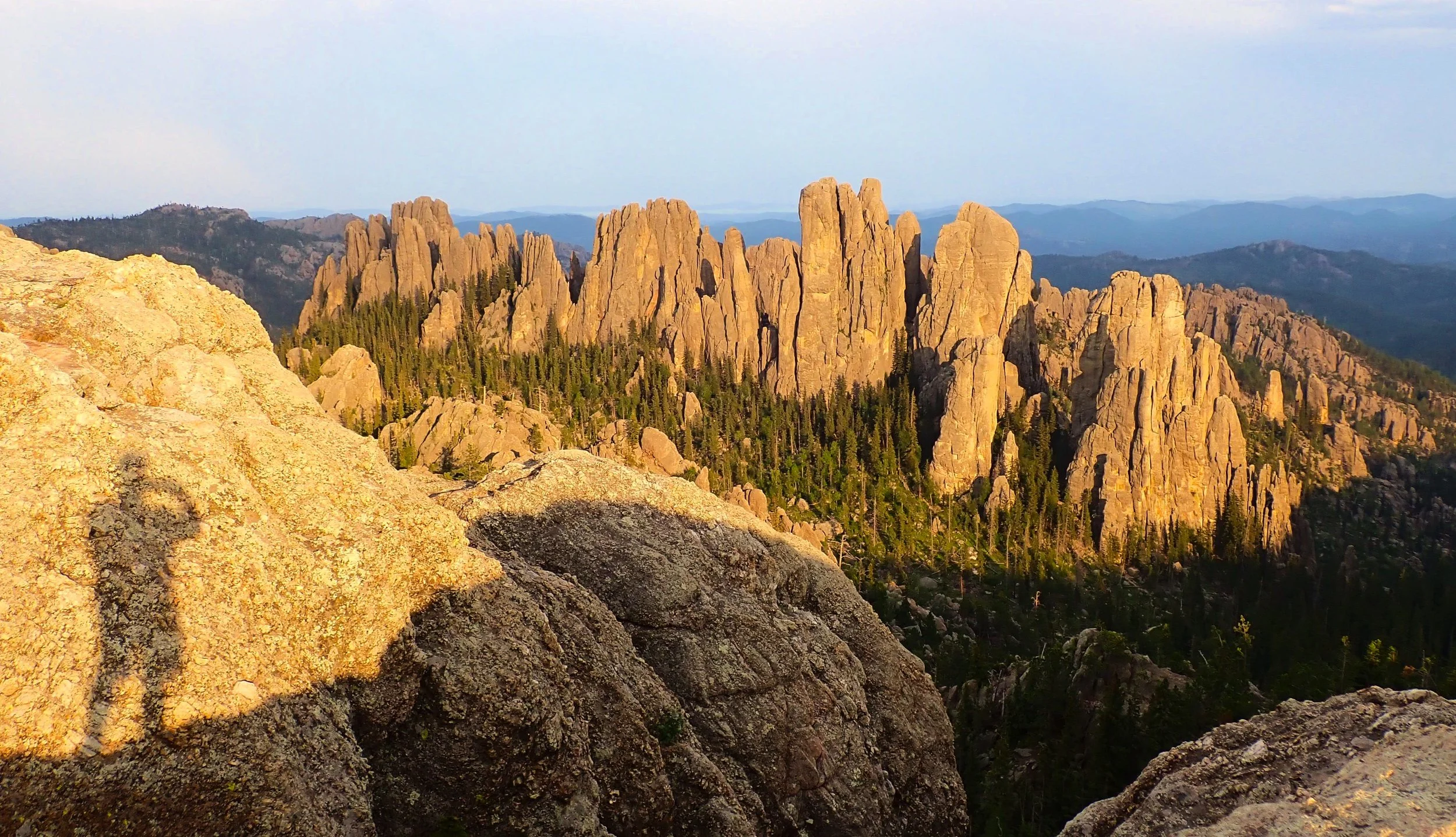Public lands are foundations for productivity.
Public lands are bastions of biodiversity.
Public lands are our heritage.
Community Economics and Health.
The travel sector is an integral part of the South Dakota economy. Visitors generate significant economic benefits to households, businesses, and government alike and represent a critical driver of the state’s economy. In 2023, visitor activity supported 1-in-11 jobs in the state and 11% of all state sales tax collections are attributable to tourism. The direct visitor spending impact of $5.0 billion generated a total economic impact of $7.9 billion in South Dakota in 2023 including indirect and induced impacts. This total economic impact sustained 57,800 jobs and generated $384 million in state and local tax revenues in 2023 (refer to SD (state) Tourism Economic Impact 2021).
Public Lands power an $877 billion outdoor economy and support 7.6 million jobs, but public lands also significantly boost the economies of communities nearby. Studies show that rural areas in the West close to public lands perform better on average than areas without public lands in various economic measures, including per capita income and employment.
Americans of all backgrounds recognize that nature helps them grow healthy, be happy, and enjoy family and friends. Adults and children enjoy their time in nature. They feel affection for nature, are attracted to its beauty, appreciate its resources, and value its role in intellectual and spiritual development.
Thriving Forests
Restoring healthy forests and rangelands yields both ecological and community benefits. The health and well-being of our country’s communities and ecosystems depend on forest and rangeland health. Healthy forests lead to healthy wildlife habitats and watersheds.
But trying to describe a thriving (healthy) forest is like trying to describe a healthy human: it’s very complex. A forest doesn’t know whether it’s healthy or not, but the vibrancy and vigor of a forest are indicators of health. A forest can be measured for its growth rate and its capacity to engage in photosynthesis as indicators of health. A healthy forest is not necessarily one that is completely untouched; Forests regularly face natural or human-made stresses (fire, insects, logging, etc), and experts suggest that an important assessment of forest health is its ability to resist and/or adapt to them. When thinking about the health of forests on any scale, it is important to look at resilience and the ability of our forests to regenerate. If there is a disturbance, be it a fire, a disease, or insect outbreak, or direct human impact, can we see that the forest can cope with and recover from that disturbance? Healthy forests provide humans with a number of benefits, including shelter, water, and food.
For a forest to be healthy and resilient, each tree needs enough nutrients, water, and sunlight to thrive. When trees grow too close together, they have to compete for these resources. This results in weaker trees that are more susceptible to diseases, insect infestations, and drought. Because of these susceptibilities, overstocked forests, or dense forests with too many trees, are prone to high rates of tree mortality. To preserve forest health, each tree must have the room and resources it needs to thrive.
Each human is comprised of roughly 60% water, making it clear that without water, we do not exist. A century of research has demonstrated unequivocally that forested lands provide the cleanest and most stable water supply compared to other land cover types. “Healthy forests typically mean clean water, and people depend on forests for their surface drinking water supplies,” said Peter Caldwell, a hydrologist.
Forested (public and other forested) lands make up 28.7% of the total continental United States (CONUS) land area, they provide 46.0% of the total surface water supply. About 125.5 million people, or 38.9% of the total population in the CONUS in 2017, derived more than 10% of their surface drinking water supply from forested lands, including those receiving water through Interbasin Transfer (IBTs). Around 83.1 million people, or 25.7% of the total population in the CONUS, receive the majority (>50%) of their surface drinking water supply from forested lands.
our Heritage
Public lands are a part of your heritage as an American. Our public lands are for all and with 640 million acres of public lands to explore, there is no lack of diverse opportunities to enjoy, including hiking, fishing, hunting, camping, or seeing historical landmarks and cultural sites.
The fact is, a resounding majority of Americans support the protection of our public lands. In a 2016 Harvard Kennedy School study, more than 93% of respondents across the country said it’s important that historical sites, public lands, and national parks be protected for current and future generations.
To title our national parks and public lands as our “best idea” was more than a celebration of these landscapes, it was a call to arms to protect and manage them for future generations. Our public lands are our legacy, our source of hope for our future, our best idea.
Why did you choose to make this area your home? We come here for many factors, but likely one of the biggest factors is the public lands. These public lands provide opportunities for us to enjoy water-based recreation on our numerous reservoirs, to fish those same reservoirs and streams, to hike trails and be out in nature, to hunt, and to enjoy jobs that are supported by outdoor activities.
Public Lands emcompass over 640 million acres spread across all 50 states and are shared by every American. These lands are managed by professional land managers in several federal agencies for the benefit and enjoyment of all future generations.





